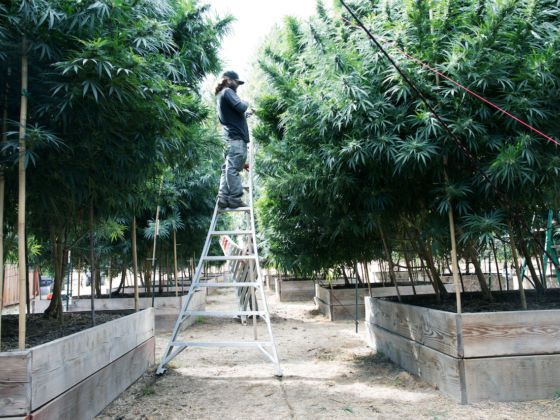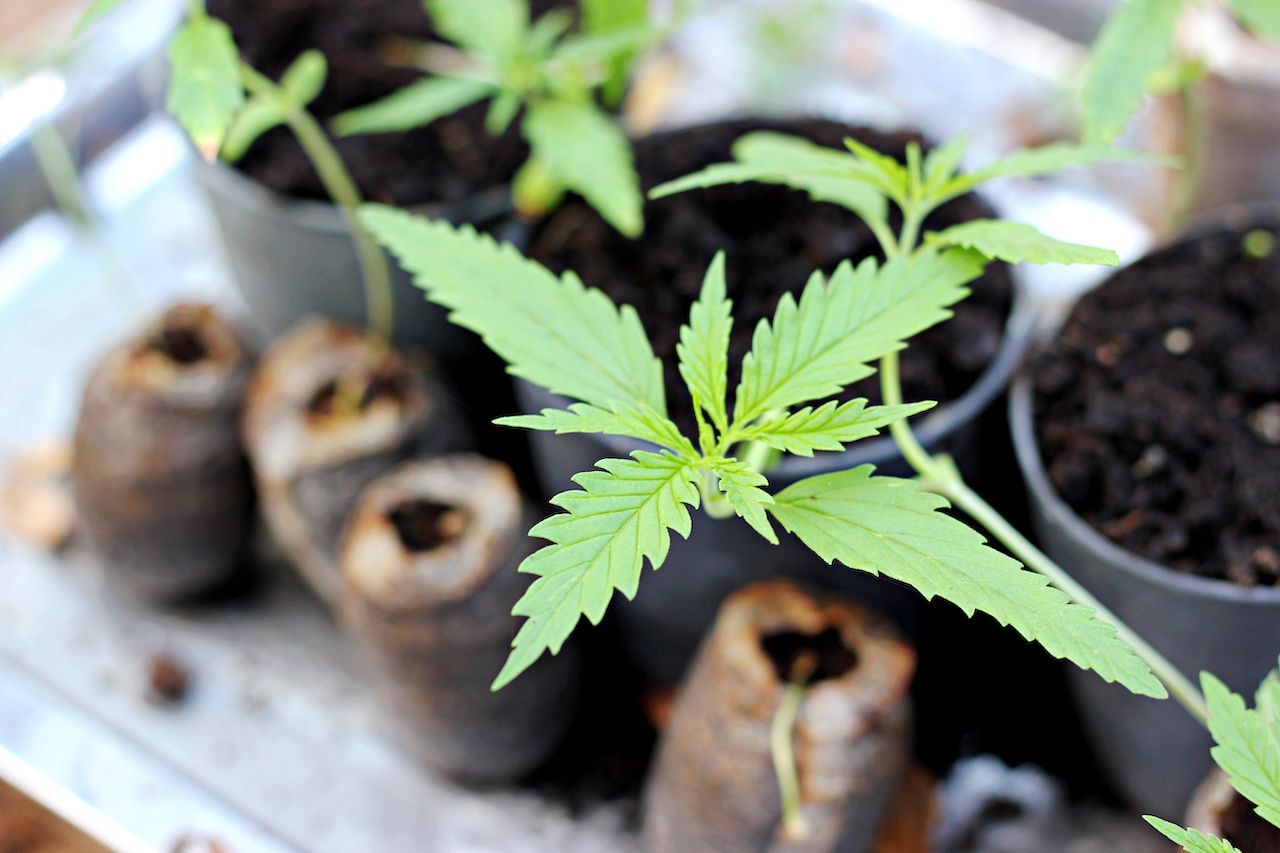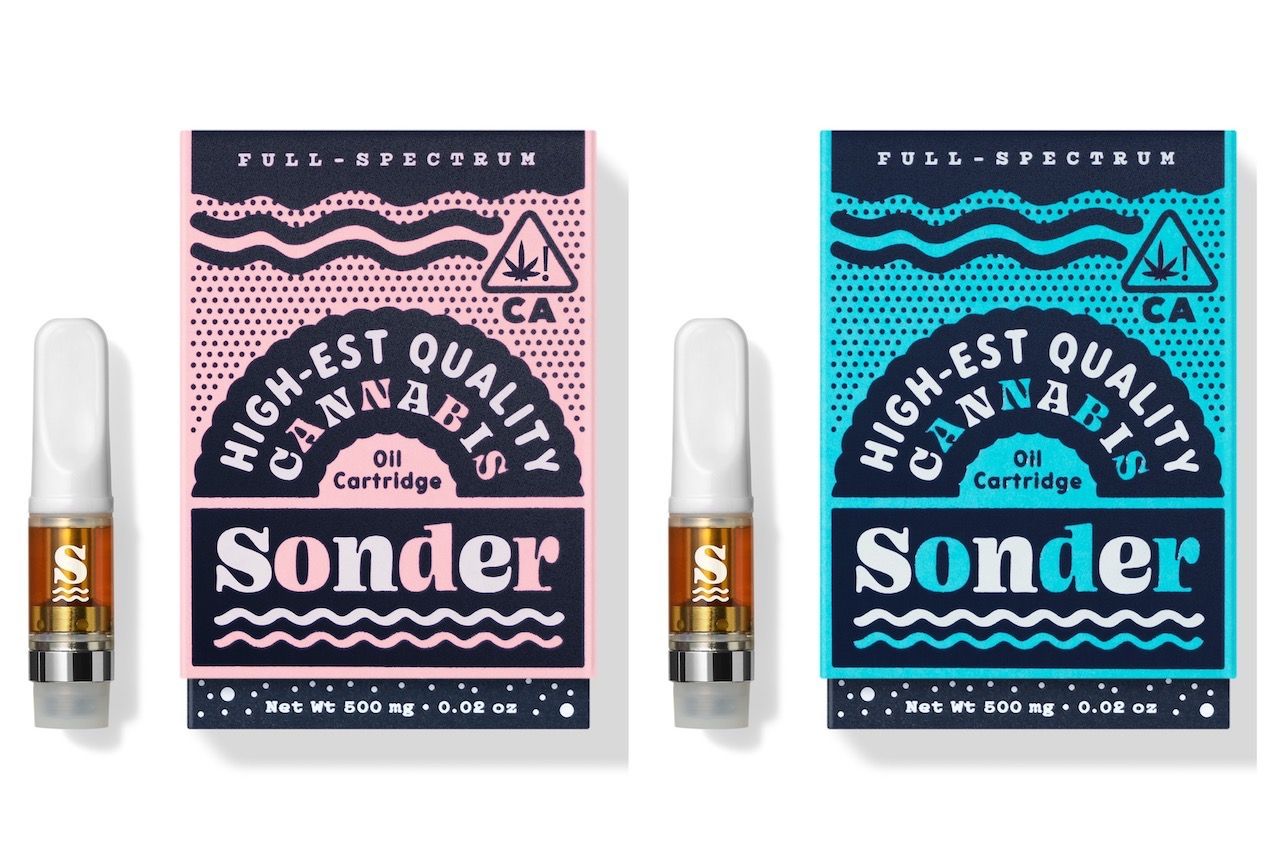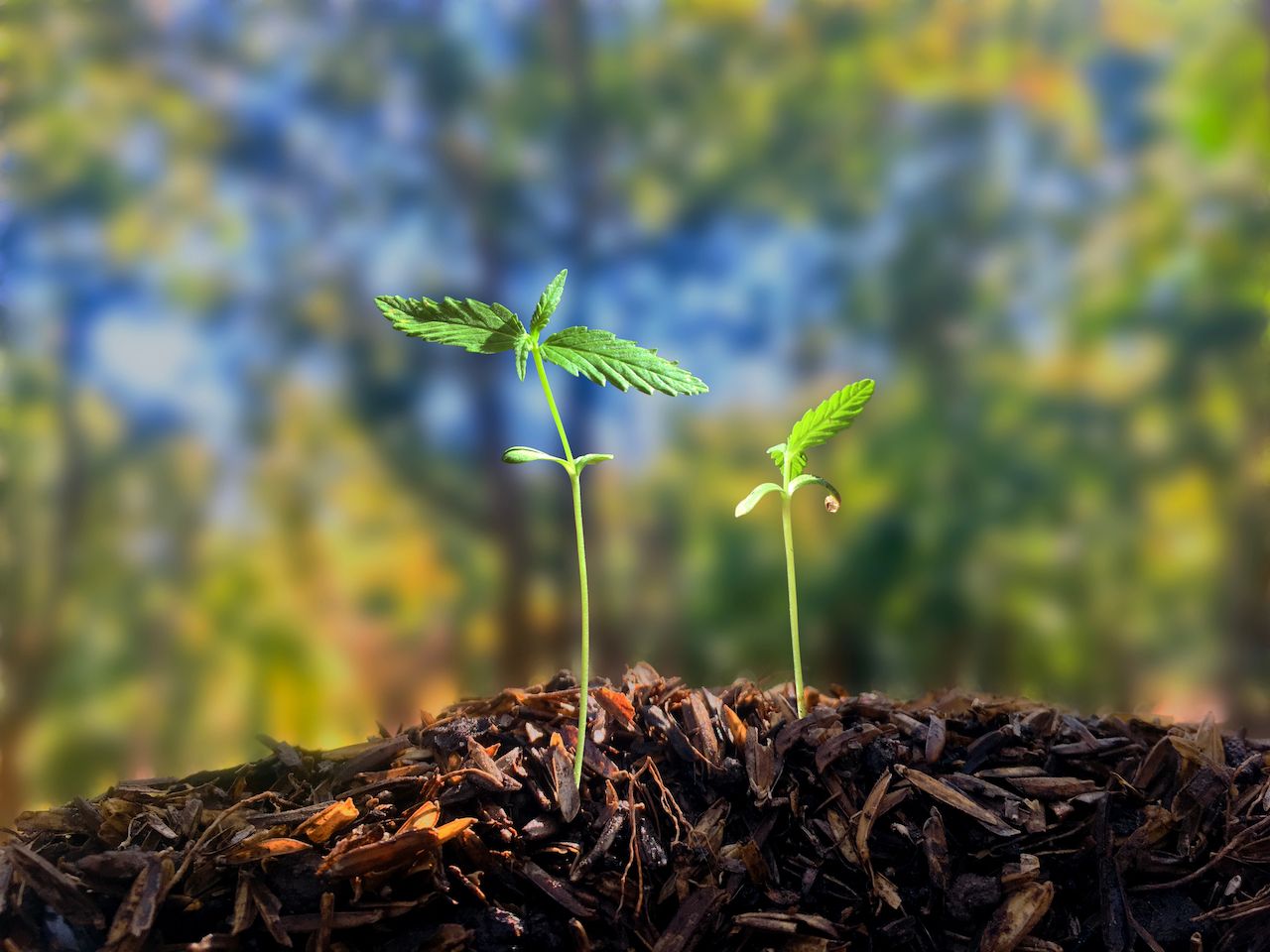There are 18-foot-tall cannabis trees growing on farms in the mountains of northern California. The stalks are thick and support the bushy leaves that catch the morning dew and soak in the afternoon sun. The plants dig roots into land that’s seen little industry and therefore little ground or air pollution. The cannabis harvested from the plants is deeply aromatic. When you smoke it, says Faun Chapin, co-founder of the northern California based cannabis brand Sonder, you taste and feel something that’s distinct to the Emerald Triangle region of California, which is made up of Mendocino, Humboldt, and Trinity counties.


Cannabis Regions Should Get the Same Recognition as Wine Regions. Here’s Why.
You can taste, in other words, terroir.
Terroir is a French term that broadly means “of a place.” It comes from terre, or land, and the modern interpretation of terroir stems from its use to describe why the same wine grape tastes different in one region than another. Terroir encompasses everything about the natural environment: the land, the soil, the weather, the microbes, and the totality of plant and animal life. It also includes the human traditions and history that shape a region. Winemakers harness terroir to make a regionally specific product. The same can be said of people in the cannabis industry.
“Like wine, terroir is vitally important to cannabis,” says Neil Bellavia, a procurement specialist at the California-based cannabis company Lowell Herb Co. “Cannabis plants are intelligent and receptive to their environments, cold nights and hot days affect cannabis plants physiology in a similar way to its effect on grapes.”
Today, high-end growers in California are working to have this terroir recognized through appellations structured in a similar way to wine appellations like Napa.

Photo: Sonder
Attention to the nuances of location-specific cannabis has grown as more and more states legalize recreational cannabis. It’s not, however, a new concept. Cannabis originally comes from Central Asia, with documented human use dating back to at least 2727 BCE. It spread around the world through trade over the centuries, and the plant adapted to new environments. Some varieties grew to produce more cannabinoids, while others became rich with aromatic organic compounds called terpenes.
Cannabis, like other plants, can vary wildly from place to place, according to a 2017 paper on cannabis and terroir by researchers from Portland State University. It comes down to genotypes and phenotypes. The genotype, the totality of traits a plant’s DNA is capable of showing, is a set standard. The phenotype, the traits that a plant variety actually shows, is determined by the environment. The latter is what makes regionally specific cannabis.
“It is expected that clones with the same genetics grown by multiple farmers will express different phenotypes because of epigenetic changes that take place as plants adapt to their unique environment,” the abstract reads, which is “the essence of terroir.”
Modern cannabis is broken down into two broad phenotypes: indica, which is associated with sedative effects, and sativa, which is associated with stimulation. These are further divided into what are called “landrace” strains. Landrace cannabis has been growing in a location for so long that each plant is consistent year after year. Strains typically have location-specific names like Hindu Kush and Afghani (from Afghanistan and Pakistan), Kilimanjaro and Durban Poison (from eastern and southern Africa), and Acapulco Gold and Panama Red (from Mexico and Panama).
Today, cultivators primarily grow hybrids of different landrace strains. These hybrids are designed to grow better in certain environments or are bred to maximize certain characteristics, like higher THC or CBD content.
You can think of landrace strains as the equivalent to sauvignon blanc or cabernet franc wine grapes. When humans crossbred the two, they got the hybrid cabernet sauvignon. All three grapes produce different phenotypes depending on where they’re grown. The same is true for landrace and hybrid cannabis.
“Just like with most other crops and plants found on Earth, the climate they grow in has a lot of effect on the final outcome,” says Roxanne Dennant, co-founder and CEO of Fruit Slabs, which makes fruit edibles. “We use fresh fruits in our edibles and the mangos from Columbia taste, look, and are texturally different than the ones grown in Mexico. Cannabis grown outdoors in the Emerald Triangle of California, which is a supreme microclimate to cultivate cannabis in, is going to be very different from the cannabis grown indoors in Massachusetts.”
The impetus behind the California-based Origin Council is to recognize appellations in California cannabis, similar to the way the state’s wine appellations are recognized. Mendocino, which is near the famed Napa and Sonoma wine regions, is especially primed for this type of categorization because highly aromatic and distinct cannabis grows naturally thanks to the area’s microbiome.
At Sonder, the growers focus is on seven strains. The plants are grown just north of Mendocino by Faun Chapin’s brother. The farm is on a mountain top, and their cannabis is heavy on terpenes and a little lighter on the THC, Chapin says. At the farm belonging to a friend just one mountain top over, the cannabis is a little stronger when it comes to THC but has fewer terpenes.
“Even the mini microclimates can change how outdoor cannabis grows and thrives,” Chapin says.
Which is all the more reason to differentiate for the high-end modern consumer.
The realities of the modern market

Photo: HUXTON
Today, recreational cannabis is legal in 11 states and Washington DC. Another 22 states allow medical cannabis. It’s safe to say that there are more regular and occasional consumers — at least more openly using consumers — in the US than any other point in history. This means more boutique suppliers have opened to cater to a larger number of discerning consumers, as well as vastly more mass market suppliers.
Indoor or greenhouse-grown cannabis is the majority of what’s sold at dispensaries today. Think of it like the house bottle of “red blend” on the table at an Italian restaurant. The bottle won’t have a story of a fourth-generation farmer who picked the grapes by hand and let them naturally ferment into wine, but it will be consistent from one year to the next. No matter where you go, you can count on a house red blend to taste relatively familiar. The same is true for cannabis.
Blending allows for “a little more easy access to the consumer,” says Dustin Johnson, co-founder of HUXTON, a cannabis brand available in multiple states. He started in the industry in Arizona in 2012 just as medical cannabis was legalized. He has since taken his HUXTON brand to recreational states like Nevada, Washington, and California. Rather than cultivating in each state, HUXTON sources and thoroughly tests strains to create three custom, consistent blends you can find wherever HUXTON is available: Rise (a sessionable sativa-indica hybrid), Hifi (a sativa-dominant energizing blend), and Zen (an indica-dominant relaxing blend). Each blend has to be custom made depending on the city and state it’s sold in because federal law prohibits sales across state lines even if recreational cannabis is legal in both states. HUXTON tests the available cannabis to make sure that blends are the same everywhere they are sold.
“[The blends are] something that are easy to understand,” Johnson says. “Cannabis is confusing. Walking into a shop and knowing what to buy, even I can get confused.” He later adds that the goal for HUXTON is to “give people the ability to have a very similar experience no matter where they are.”

Photo: HUXTON
That’s far from an easy task. Indoor grown cannabis is impacted by its environment just as much as outdoor grown cannabis — albeit in different ways. Johnson notes that the same strain grown in two different facilities experience different humidity, nutrient choices, soil selection, and curing processes. That makes the skills of the blenders all the more important, just like with wine. To give special recognition to growers who emphasize terroir is to also acknowledge the blenders who set a standard of flavor and experience.
There’s much more indoor and blended cannabis available on the market than terroir-focused cannabis. The former is what the majority of consumers — both new and experienced — will purchase. It’s also what will be closer to what’s considered standard cannabis.
Annual terroir versus perennial terroir

Photo: SURKED/Shutterstock
For all of the similarities between wine and cannabis — whether you’re talking about terroir-focused or blended — the plants are very different in how they’re grown. Therefore, the application of the concept of terroir must be different.
Cannabis is an annual plant. In nature, it sprouts in the spring, grows through the summer, flowers in the fall, and then dies. The same lifecycle happens through simulated environments at indoor grow operations.
Wine grapes, on the other hand, grow for decades. Vines that are 20, 30, 40 years old have embedded into the soil and become a defining characteristic of the land over time.
This difference in lifespan means that grapevines have the luxury of time to establish terroir whereas cannabis does not. Further complicating matters are the laws in many areas of recreational states that ban outdoor farms. Which elicits the question of whether something can express terroir without relying on the physical land — a component so central to the concept.
This question and others shape the debate for appellations for northern California cannabis. Gretchen Giles, who sat on the California Department of Food and Agriculture’s Appellations Working Group to help draft initial regulations in 2019, elaborated on why the debate over terroir in California cannabis is still ongoing.
“How do you express terroir if you’re not legally able to put plants in the ground outside?” she asked in an email. “Can hydroponic cultivation express terroir? If so, is that simply the flavor bestowed by the civic water source?”
Giles is a board member of the International Cannabis Farmers Association, and is working on answers to questions like these.
“Emerald Triangle farmers who grow in the ground and in the sun argue that theirs is the only method of cultivation that allows terroir to be truly expressed,” Giles says. “Some want to prohibit the use of water that doesn’t come from rain catchment or well. If you can’t grow that way because your Board of Supervisors won’t allow it, does that mean that you can’t have an appellation, that your area and cultivation methods don’t evoke terroir?”

Photo: Sonder
Exclusivity is the point of appellations. It’s a statement that the product is made in one area according to a set of rules, which makes it different from the same product made anywhere else. Bellavia, from Lowell Herb Co., also notes that factors other than location are at play.
“Adding the appellation of origin would best describe the difference in cannabis from different regions,” Bellavia says. “More important than where it is grown is how it’s grown. Using organic compost teas as fertilizers, natural farming practices, and taking the time to cure the cannabis properly helps in giving a fuller taste profile.”
The matter of process

Photo: Sonder
For growers who want to show as much terroir in their cannabis as possible, how their product is processed and consumed matters almost as much as how it’s grown.
There are a few primary ways that cannabis is consumed: flower (the dried buds of the plant that are smoked in a pipe, joint, or bong), vape cartridges (e-cigarette attachments filled with a concentrated oil), and edibles. All of these ways, along with the myriad other methods, involve processing of some kind. Processing doesn’t mean losing terroir — wine is also processed from grapes — but it does have to be done correctly to let its characteristics shine.
“Flowers will be the best way to express terroir, as they have not been altered,” says
Erich Pearson, CEO of the cannabis company Sparc. “I expect that many concentrates that can be smelled by the consumer will too.”
Pearson also notes that it’s harder to show terroir through vapes. It’s possible, however, if the right steps are taken.
At Sonder, the focus is currently on small-batch, single-strain cartridges (though there are plans to expand into other product lines with the next harvest). Chapin and her team spent a lot of time prior to launch learning how to convey a sense of terroir through vape cartridges. This method, known as full spectrum, highlights all of the plant’s qualities. It’s a way to show terroir in the final product, as opposed to distillate cartridges that are processed into an oil solely composed of cannabinoids like THC or CBD.
“Distillate [cartridges] is like a shot of Everclear,” Chapin says. “Full spectrum is like a beautiful whiskey that’s peaty and full-flavored.” She later adds that many cannabis brands have “gone the route of chemistry” to try to showcase certain qualities. But “the flavinoids, terpenes, cannabinoids — all are necessary to get the full entourage. A distillate is just the THC molecule.”
The future of terroir in cannabis

Photo: benze11/Shutterstock
As people in the United States grow increasingly comfortable and familiar with cannabis, producers will find better ways to communicate how their product is unique to the place it’s made. There will also be cannabis farms in destination regions, just like there are with destination vineyards — Sparc is working on a tourist-oriented farm in Sonoma County. There will also be more producers who make easily understood blends.
“There’s space for both,” says Johnson, of HUXTON. More consumers overall means more people who are looking for a consistent product across the board, as well as more people who are looking for the terroir-driven boutique experience. It’s just like how big wineries exist as well as boutique wineries, and how craft brewers exist as well as macro brewers.
“As the market matures, absolutely,” Chapin says when I asked her about whether there’s space for terroir-driven cannabis as well as more mass-market products. “Unfortunately, some of the smaller farms will get weeded out, but the ones that survive will thrive because the demand will always be there.”